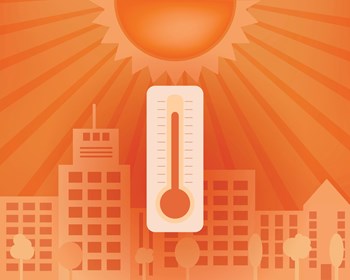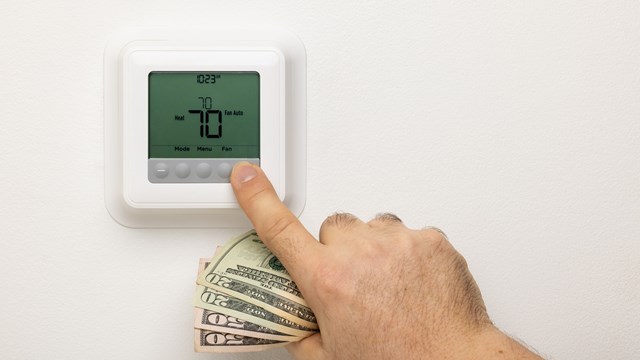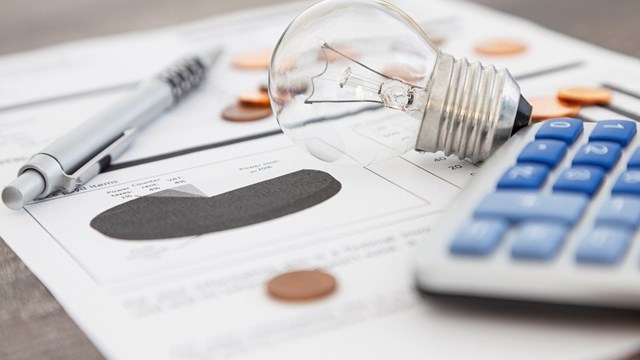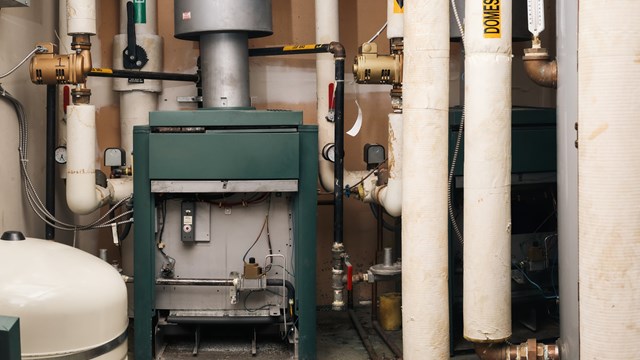
The reality of climate change is upon us. Weather patterns have changed, and seasons have been altered. We experience more intense heat, more frequent, destructive storms, wide-ranging wildfires, and more destructive cold. Tornadoes—the spawn of conflicting hot and cold air masses—touch down in places they were once almost unheard of. What was scientific prognostication only a few years ago has become reality. It’s also a reality that most of the structures that house our homes—particularly high-rise multifamily buildings—were not designed for these types of changing climate events. While that’s a chilling thought, today’s communities have no choice but to deal with that reality, as well as plan for what may be ahead.
The New Reality
Perhaps the two most pressing and dramatic ramifications of climate change facing our communities today are the rise in sea level, and the increasing intensity and frequency of severe storms. More concerningly, these two events overlap, causing even greater peril, which is particularly severe for communities built along our coasts.
“The biggest issue is along our waterfronts,” says Kevin Keating, an architect with Selldorf Architects, a global architectural firm based in New York. “For communities along our coasts in Long Island, Florida, and New England, for instance, rising sea level is the biggest issue. Combine that with bigger storms up and down the East Coast, and you must ask the question of how we will fortify the properties against the combination of these two factors.”
“Hotter is hotter, and colder is colder,” says Howard Zimmerman, owner and founder of Howard Zimmerman Architects & Engineers, a consultancy based in New York. These new extremes in temperature, he explains, add stress to our building systems, reducing their useful life and requiring more maintenance and earlier replacement.
Another concern, explains Peter Varsalona, vice president and principal of RAND Engineering, is that with worsening extremes of hot and cold, more energy is necessary to maintain interior temperatures through existing HVAC systems, exacerbating the original problem of human-made carbon emissions by necessitating more energy use to achieve the same results as before. So not only does climate change cause more extreme conditions, but the extreme conditions it causes require still more energy to mediate, which in turn worsens the problem...you see where this is going.
How Much Worse?
The reality is that the situation is likely to get worse before it gets better. Years of inaction and politicization of the issue have given the upper hand to human industry’s impact on the planet. The United Nations Intergovernmental Panel on Climate Change (IPCC) released its most recent report on the issue on August 9, 2021. Its sobering findings include that, averaged over the next 20 years, global temperature is expected to reach or exceed 1.5°C of warming—a rubicon of sorts that climate scientists say will result in increasing heat waves, longer warm seasons, and shorter cold seasons. “Unless there are immediate, rapid, and large-scale reductions in greenhouse gas emissions, limiting warming to close to 1.5°C or even 2°C will be beyond reach,” says the press release on the report’s publication.
The changing climate is already fueling disastrous weather around the world. Glaciers are melting faster, dumping huge amounts of water into the oceans and impacting weather patterns. Hurricanes are getting more frequent and ferocious; unprecedented, torrential rains have unleashed floods in China and Europe, as we saw with the tragic, deadly situation in Germany this past summer. Heatwaves and wildfires are scorching Siberia and the Arctic, and laying waste to swathes of the Western U.S.
With regards to rising sea level, Varsalona notes that by 2050 or so, flooding is going to be a major issue in low-lying areas. “The short answer is yes,” he says, but he and the other professionals interviewed for this article are quick to say that predictions—even those based on current data—are tricky when it comes to something as complex and variable as climate.
“No one predicts these things,” says Keating. “You don’t know what you don’t know. In many cases we react to what’s out there historically, but that’s a reaction to something that’s already happened. We are now talking about things that haven’t happened before—and there’s no political will to react to future problems. We tend to only react to what we’ve seen.” Though based on the UN IPCC’s projections, it’s becoming obvious that even if we haven’t yet seen what’s coming, it isn’t pretty.
Zimmerman observes that an intrinsic problem in dealing with the impending effects of climate change in our communities is the very structure by which our communities govern themselves. “The problem is that with most condo and co-op communities, the boards are composed of volunteers,” he says, “and in some cases, those serving on boards have term limits. Planning of this kind is looking down the road 10 to 15 years or more. No board wants to assess their neighbors for monies they need 15 years from now. The process is too short-sighted right now.”
This problem is particularly acute in Florida, where the effects of climate change are most pronounced at present—and where Florida’s condominium statute permits associations to bypass mandatory reserve funding requirements for building systems. Frankly, it can be very hard to convince association members, many of whom may be elderly and on fixed incomes, that they need to set aside monies for potential disaster situations that might occur beyond their typical human lifespan.
Countermeasures
What can we realistically do to counter the troubling trends that are clearly coming? The answers fall into three broad categories: floodplain management, energy efficiency, and appropriate capital improvement planning.
Perhaps most immediate for many communities—especially those built along the waterfront, though not limited to them—is protecting vital infrastructure from flooding. As New Yorkers learned from Hurricane Sandy, areas not found on the 100-year flood map were, and are, subject to inundation. Floods come from all kinds of waterways—not just oceans. Rivers, streams, and even poorly constructed roadways in need of upgrading can potentially create flood conditions (especially if they’re built on top of former canals, creeks, or other tributaries).
Traditionally, vital infrastructure systems such as HVAC equipment, electrical rooms, and other systems critical to multifamily building operations have been hidden in basements—the least desirable and valuable portions of our buildings. These building areas are also the first and most likely to become flooded. “Along the shore where you are building, there must be a wet and dry approach,” explains Keating. “The first residential floor must be a second floor. Additionally, walls must have ‘give’ on first floor walls to allow water through. This maintains structural integrity of the building. The walls will give way to the pressure of waves without causing structural problems.”
Newer standards also recommend “getting your critical infrastructure high above the floodplain,” Keating continues. “Unless you have a full ring around you, dikes don’t work.” This means that both owners of existing properties and builders of new ones must place critical building systems above the potential water line. In many cases, that now means the second floor rather than in a basement, because the second floor has less residential value than higher floors, and less commercial value than the ground, or first, floor.
Zimmerman concurs, adding, “There is a trend to move utilities upstairs, out of basements. Over time, with higher water levels, etc., it makes sense to move infrastructure to higher ground or levels. In the end it’s a more cost-effective solution. In beachfront properties on Long Island, we notice more and more that utility boxes are built on platforms free of the building and five to six feet above grade because of storm surges. We learned this from Sandy.”
Another major concern is reducing the environmental impact of residential buildings. In New York City, the enactment of Local Law 97, requiring the reduction of individual carbon footprints, phases in over the next decade. It brings strict requirements for all building owners—including co-op and condominium properties—to control energy use. “Rising temperatures are ironically increasing energy use,” says Varsalona. “More electricity is needed if you have steam-generated systems, for instance. Sadly, the impact is that you use more energy to combat the changes, which perpetuates the cycle. We must come up with ways to update old systems and make them more efficient. We must start planning and retooling now, not only to achieve our climate goals, but to also not be penalized by the new law.” Retreating from fossil fuels to more sustainable, renewable sources like solar energy is optimal here, if not easy.
In terms of maintaining and preparing our buildings for worsening conditions, the pros say it’s critical to put capital improvement plans in effect now. Zimmerman stresses that circumstances have changed. “Saltwater rots out power lines,” he says. “Driving rain, hotter heat, and colder cold has a corrosive effect on all mechanical systems, long term. We might not see the effect in the short term, but we will see it in the deterioration of roofs, facades, and infrastructure happening that much sooner. We might have gotten 30 years from a roof before. Now we will get 20 or 25 years. It’s a harsher environment—and that’s the real effect on the built environment”—so it’s critical to put appropriate capital reserve plans in place.
Practical Applications
Edwin Suarez, president of New York-based Jomavi Contracting, observes that changes in approach are already underway. “In today’s construction, we are very mindful of climate change,” he says. “Everything from paint, to compound, to insulation and other materials have changed to fulfill an eco-friendly green standard. Green building materials with low/no embodied carbon are on the rise. These materials produce little to no carbon or other greenhouse gases, and are overall environmentally more beneficial. Many projects are now one hundred percent green. Architects are really stepping it up as well, in both how they plan a job and in adhering to new building requirements. They are taking climate change seriously.”
Another concern is risk management. “The timeframe to make your plans is now,” says Keating. “Don’t wait. Insurance is getting more and more complicated. Insurance companies always look to avoid risk, so they may refuse to insure some projects or buildings. The more storms, wildfires, etc., we have, the more insurance premiums will go up—and [may] reach a threshold where insurers feel it’s not worth the risk. There will be fewer and fewer companies offering protection.”
Co-op and condominium boards must also consider the future well-being of their physical plant. “There should be some kind of best business practice, like guidelines for what kind of reserves must be maintained,” says Zimmerman. “Required capital funds of a certain percentage of value of property for instance, so that money is available for major capital expenditures. Boards should hire architects and engineers to explore their vulnerabilities—and as we learned from the Surfside condo building collapse in Florida, reserve funds will become more and more critical. No board president wants to be faced with a report that says the property needs millions of dollars of work and they have $100 in the reserve account.”
“You’ve got to do it now,” says Varsalona. “If you don’t start now, you will be caught late.” Climate change is no longer an abstract concept to be debated based on what side of the political divide you place yourself on. It’s real, and according to both the science and the practical advice of professionals working in the field, it’s time to start acting, rather than reacting. At this point, an ounce of prevention is worth way more than a pound of cure. Start mitigating now.
A J Sidransky is a staff writer/reporter for CooperatorNews, and the author of several published novels.









Comments
Leave a Comment